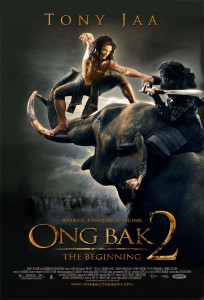
"Ong-Bak 2" US Theatrical Poster
Director: Tony Jaa, Panna Rittikrai
Cast: Tony Jaa, Nirut Sirichanya, Sorapong Chatree, Sarunyoo Wongkrachang, Santisuk Promsiri, Primorata Dejudom, Natdanai Kongthong, Prarinya Karmkeaw, Patthama Panthong, Petchtai Wongkamlao, Dan Chupong, Tim Man
Running Time: 92 min.
By JJ Hatfield
Five hundred ninety years ago in a place known as Siam struggle for power was tearing the country apart. Violence of immense proportions seized the land, from both royalty and bandits. The citizens were mostly poverty stricken and defenseless however that did not stop the slaughter of many, many thousands. In the Buddhist epoch calendar it is the year 1974. King Rama II of Ayutthaya created a powerful Royal Court in efforts to expand the kingdom and seized Sukhothal. When enough soldiers were gathered they battered and hacked the way to the east and laid siege to the City of Angels (Bangkok) for eight long months.
Ayutthaya was a Siamese kingdom that was in power from 1351 until 1767. Ayutthaya was known as a city that welcomed most foreigners and traders including Vietnamese (Annamese), Chinese, Korea (now)Japanese, Indians, Persians and other foreigners, even letting them establish whole villages around the city walls. The Sukhothal, dynasty lasted from 1238 – 1438. This information is very much real. The period piece is on the mark with the rulers and events in general. Of course Teean’s story is not a part of history but someone did their homework so that the story fit into what we do know about the period.
From a rainy mist comes the sound of a horse breathing hard. The rider is being pursued by a number of enemies. Realizing all is lost he does what he can for the young boy riding with him and leaves him to care for himself. Suddenly the soldier runs into a trap and is killed in a flurry of arrows. Then the “Ong Bak” logo comes on and the movie rarely slows down again.
The young boy is Teean, played by Nutdanai Kongtong. His father is one of four generals in charge of keeping the peace in the area in a time of violent turmoil. Teean has always wanted to be a great warrior like his father. However his father and mother do not want him to be involved with fighting in any way, hoping to keep him safe and separate from soldiers and enemies. His father refuses to teach him how to fight instead sheltering him in a village known for the arts, music and dancing. The general is betrayed and his household killed, simultaneously enraging and demoralizing him. Teean is thrown into a savagely different world after being torn from his parents and all he has ever known. The situation goes from very bad to very much worse when he is captured by slave merchants. He doesn’t even know where he is or how to fight but he refuses to just accept his fate quietly. That is the kind of spirit that might allow him to survive in a world seemingly full of only evil where anything could be bought including humans.
By coincidence Teean is at the same market as a group of pirates suddenly take over. When they are through with the village the Chief of the Pha Peek Krut Pirates ChurNung (Sorapong Chatree) allows Teean to come with them and they heal his wounds. He is given a choice of staying there and learning the martial arts and become one of them, or he can go where ever he wants.
Teean wanders through the village. Markets and, people practicing every conceivable kind of school or form of martial arts or performing what seems more like stunts. Teean is all eyes as nearly magical things happen right in front of him. This is very different from the village with dancing and healing! People sparring with each other, flipping and spinning, some using different kinds of swords. To Teean this is the perfect place to be. He stays and learns dozens of types of martial arts fighting techniques as well as some of the other’s specialties including slight of hand and explosives.
Over the years he has never forgotten what happened to his parents, nor has revenge left his heart. He burns for vengeance and restoring the family name. While avenging them is always in his mind he begins to learn about the weapons and fighting in a more spiritual manner. That may sound odd, spiritual used with a word of weapons but many cultures felt certain weapons were endowed with special powers. The spiritual Father (Cheang) to the village tells Teean that any weapon he masters will, make him the best of the best. As Teean grows up so improve his skills.
No doubt no one will win awards for acting but everyone is good enough to make it work. Tony is probably the best actor in the film with the possible exception of Nutdanai Kongtong in small scenes. Especially after he is with Chur Nung in the village when Teean is forced to make choices and deal with incredible burdens Tony shows he has grown as an actor.
Watching Teean train is a real treat. By the end of this part of the movie Tony has proved he can do just about anything anyone else can and maybe a little better. He is eloquence in motion and the viewer is never cheated by slipping the same exact scenes as some movie do. The fighting can be beautiful but it is also bloody and deadly.
One thing I think people forget is that Panna wrote this story, with input from Tony. Panna has a spiritual element in many if not most of his movies. Sometimes it is represented through Buddhism and pacifism. However there is usually a large helping of spirit, what some would call, supernatural or magical elements. He wanted to express that early but it was usually something like zombies, or strange natives, weird creatures. In other words as much as he could afford and the audience seemed to like it enough for it to be an oft used part of a script. Ong Bak 2 is no exception. Panna and Tony expected the audience to make the connections without beating the viewer over the head with one of those skull shattering elbow strikes.
The fight cinematography is superb! Panna came up with the wild ideas and Tony and crew worked until they made it happen. Panna does know what looks good on film and I think Tony has the same quality. However not even Jet Li could pull off acting/screenplay/director/fight choreography etc. Tony took on an extreme amount of responsibility for several major aspects of the film.
A most beautiful, powerful “dance” choreography is contained in this film. While we have seen traditional Thai dancing with women this dance is performed by Tony, and what a dance! It really held my attention, an amazing blend of strength and sublety. There is also a “Drunken Tony” scene which is not to be missed!
The viewer is treated to a variety of very different moves from Tony. Chinese Kung Fu, Judo,Samurai, Ninja ?,Muay Thai and even a new form of Muay Thai Tony put together himself, a Muay Thai form with dance type movements included. Watching Tony doing Snake and Crane was a blast! I think given time there is not much Tony cannot do, if that is what he chooses. He is truly a joy to watch! It’s incredible how many different forms and styles he does and does very well.
Not to mention his real life Muay Thai boxing training with a Master who is also a stunt man. Part of the time Jaa was supposed to be *missing* he was frantically running around learning to sharpen (no pun intended unless you laughed) his skills in everything besides Muay Thai boxing. He seems to take his training and testing very seriously and spars with so many different styles and forms it’s impossible to catch them all because Tony is so damn fast.
Not only do the fights involve some very high quality hand to hand there are plenty of weapons to use and they are used! I have never seen anyone use so many different weapons! He would just pick up something and turn it into a tool, a weapon in his hands. Knives, daggers, swords, plus many more including a three section staff are used. Tony deliberately changes styles of fighting when faced with an opponent’s style, and uses, that form. All of the fighting looks fresh and new which is a tribute to Panna and Tony. They never use the same shot the same way. And of course kudos to the men and women? who are the stunt team. Without them Tony would have no one to fight.
The actual fight/stunt editing is consistent enough to keep the story flowing. There are a few flashbacks for the back story but it works well enough.
The production values are higher than in either of Jaa’s big movies Ong Bak and Tom Yum Goong. I was impressed with the over all realistic feeling of the sets, from the primitive villages to the gauche finery of the royals. Roads and paths are dusty or muddy, depending on the season.
The viewer sees a wide variety of objects that were probably in use at the time on a daily basis. Costumes were done well both for royalty and peasants. There were a lot of extras involved to clothe as well. Most of the males, excluding royals seemed to be wearing a loincloth and tattoos/paint. It could be historic and accurate but not something I want to see much more. The tattoos may denote rank in the army, or property of, or spells to make them rich. I have not been able to find out anything for certain other than they were in the movie.
Jaa is nimble and agile sailing effortlessly through the air then suddenly deadly as he nails his opponent with two knees to the chest. There is an amazing stunt (yes it is a stunt and it was very dangerous) with Tony running around on top of a herd of elephants moving pretty damn fast. He is nearly as nuts as Panna.
Tony does have good ideas about story lines but there is the contract he must adhere to and no one around here has seen a copy of that. I think he also has a good eye and someday may make a great director. But not even Tony can do everything at the same time and devote 110% to the project.
The number one problem with this film was that it was only half. Ong Bak 2 and 3 were one complete film. If it had been left as one film it would not have seemed so lopsided as well as 3. The studio decided to split the movie. Big mistake, for the story and the viewer but it made more money that way so screw the story.
Panna wrote the story and co – directed with Jaa. So it wasn’t as if Tony was all by himself in the film’s creation. It really f$cked up the movie to have it split. Virtually all the filming for Ong Bak ”3“ was in the can but the studio wanted more money so they hacked it into two and had to add more flash backs and back story.
There were problems that were certainly not Jaa’s fault including having to cut the temple scene (Preah Vihear) temple very short, or edit it out of the film due to tensions between Cambodia and Thailand as it is close to the border of Cambodia. It wasn’t safe.
So much negative press and PR and really, really bizarre rumors about Jaa and the film. Jaa disappeared, died, was hanging out in a cave “meditating”, in Cambodia to learn the black arts and even more bizarre rumors. To the best of my knowledge Jaa and/or representatives had to discuss the use of the temple close to the border. In some newer versions of the film the scenes were cut entirely or truncated. The same with the black arts. Someone needed to have an idea of how to represent emotions and feelings as becoming tangible. Was Tony ever there? Does it matter? With all this bizarro shit supposedly happening not one person got off a pic? Not even in Thailand are things such that no one would talk about this stuff. A substantial portion of claims are probably fiction but there is often something real, that sets someone off and the story goes on.
Even though his character was on screen only a short time I like the Crow Demon character, played by Dan Chupong. Some places list him as un-credited but he is credited in the Thai only movie as well as the version with subtitles.
The viewer must pay attention between the action because there are things that connect the three Ong Bak movies. If you have not seen Ong Bak 2 do not bother to see Ong Bak 3 because you won’t understand anything. There are still unanswered questions, most of them will be answered by 3 and then you see the connections. Also remember reincarnation is an accepted fact by Buddhists. Things you do in previous lives really does effect your path in this life or the next and so forth. If you can’t accept the characters’ whole hearted belief, you won’t understand the film and you won’t like it. In fact rigid in the box types don’t watch this. Without setting aside different beliefs (if you have them) this movie is beyond you. Just turn off the sound and watch the action.
Ong Bak 3 is much more in the spiritual realm than OB2, the way they cut the film in half. It too is a great movie but very different than what the viewer sees in OB2.
Remember that, Ong Bak was released in 2003, and Ong Bak 2 in 2008. Between the two Tony Jaa made Tom Yum Goong, a fantastic film but not related in any way to Ong Bak. Actually there are a couple of connections I thought you could make a case for but no one else has stated that so it’s simply my opinion. It doesn’t matter because Ong Bak 2 is a totally different story, even from the first film. Watch “2“, more than once before going on to “3“ That’s all I can say without spoilers.
Please forgive any errors I may have in spellings of names or other information. The more research I did the more confusing the matter became. There are multiple spellings and pronunciations for nearly every region and person. Since history is written at first by only the winners it can become exceedingly difficult to sort it all out.
Ayutthaya was officially known as Siam, however people of Ayutthaya called themselves Tai, from the Kingdom of, Krung Tai or ‘the Kingdom of the Tais. This is not confirmed.
JJ Hatfield’s Rating: 9.5/10
By Ningen
Aspiring to be a prequel to the original Tony Jaa action-adventure flick, Ong Bak 2 decides to go back six hundred years before the setting in Ong Bak 1. In OB2, Jaa plays Tien, the son of a village chief trying to stand up against the imperialistic Evil Overlord, er, Rajasena. Rajasena killed Tien’s parents and wiped out his village when Tien was a child. Tien survived by seeking refuge with a group of bandits versed in the martial arts. Tien then seeks the bandits’ training, in order to get his revenge on Rajasena.
While the first Ong Bak was a semi-tribute to Jackie Chan movies and a basic man-on-the-run film, the director of the sequel apparently decided he needed to go Hollywood with this one. So in Ong Bak 2, you have to endure pointless Bay-style slow-mo pans combined with pseudo-Enya music, unnecessary and frequent flashbacks which don’t really add anything new to the main story, a childhood friend who becomes a love interest to Tien for no reason, and a tenuous and disappointing connection to the original film, a la George Lucas with Star Wars I-III. So what should be a fast-paced action movie ends up feeling a lot longer than its 90 minute running time would suggest.
And while there are fight scenes, they don’t very show up often until the end of the movie. Plus, by then, the fights get really boring really fast. The choreography itself is a bi-polar mix of regular martial arts and wannabe-MMA bloodbaths consisting of groups of thugs over-powering Tien in numbers, more than skill.
Meanwhile, the story’s a pain in the ass, since it gets my hopes up, and then wastes my time with a Mondo Cane-style tour of Thailand which probably does more to hurt the peninsula’s image than help any tourist bureaus. Yeah, I know Ong Bak 2 takes place in a different century, but I don’t think scenes of the locals eating animal eyeballs will encourage casual viewers to order Thai food any time soon. And I was bored enough with the pointless dance numbers in Flying Daggers. So I don’t need them being used in place of character development and tension in this film. Plus, I can experience that form of performance art for free in a National Geographic documentary. So why do I want to pay to sit through it in an action movie?
But I think what really pisses me off is the way the movie goads me into believing that Tien can and will save the day. I won’t mention any spoilers, but after the build-up, the plot suddenly throws in some cheap twists near the end. These sudden developments don’t come off surprising as much as forced. And by the time you’re done with the story, you’ll wonder if you reached one of those “alternate” endings in a video game you were supposed to play “correctly” to get to the real conclusion. But either way, with Ong’s Bak 2 paper-thin writing and uninspired fights, you’ll lose.
Ningen’s Rating: “Elephant-fu” 8/10; Regular fights 6.5/10; Story 4/10; Final score 5.5/10
By Kioko
My last review of Tony Jaa’s Tom Yum Goong rated a 10/10.
The title of the best martial artist on film has been handed over to Tony Jaa.
Everything I said then about Jaa rings even more true NOW with his latest release of Ong Bak 2. This is his directorial debut and you can see such a difference with his last films and this one. Specifically, the other films had an observant, tripod, watch-the-stunts-on-film feel to it. Much like all of Jackie Chan’s films. In Ong Bak 2, Jaa shows style, visuals, flashbacks, themes, he shows it all. Everything you see on the screen has a purpose.
The story has a similar theme, young boy trained in the martial arts. But this film adds a Soap opera feel to it, keeping you involved in the story as it is revealed to you parts at a time. And involves the history and motivations of not just the main actor, but the supporting actors and villains as well. And it doesn’t drag.
There is no one who can touch Jaa. The actions is SPECTACULAR! Of 90 minutes. There is 30 minutes story, 60 minutes action. He shows the martial arts on film in a way not seen since Chang Cheh and Shaw Brothers film of the 70s. There is even a 11-second one take fight scene. Over 10 different weapons, 8 different styles you can see he poured his heart into this one. Grouping a few scenes together, I’d even say it is borderline X-Rated violence. Definitely R.
If there were any debates that Jet or Jackie was the next Bruce Lee. Then you gotta give Jaa his props. He pays an homage to Jackie Chan’s drunken master and crushes Chan’s performance. One scene that impressed me was his Kung Fu Fist and Muy Thai fist vs 2 opponents. He switches styles back and forth throughout the fight.
Other elements, the music score is really fitting. Head banging right along with the action. Even the Koon dance, that I thought would be a drag, they scored it just right and was great to see. Cinematography, thankfully, the camera pulls back and doesn’t chop up the acting or the fighting.
Proper martial arts film – it’s the hard, raw, kick ass ma film we have been waiting for since the days of Bruce Lee.
Kioko’s Rating: 11/10





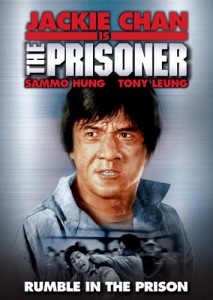
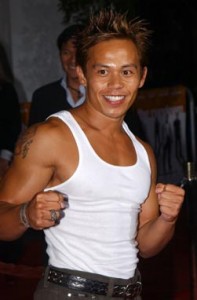
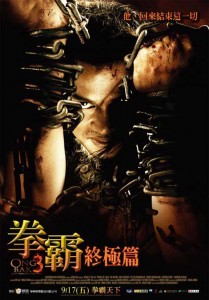

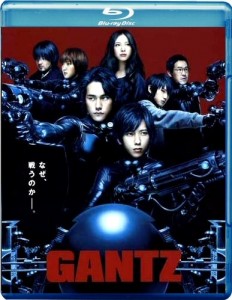
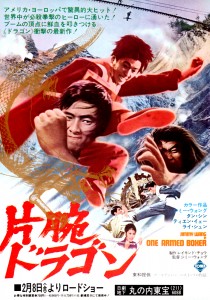
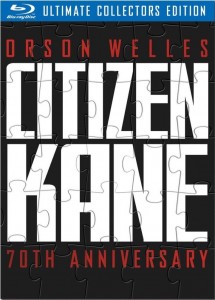
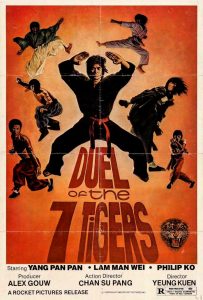
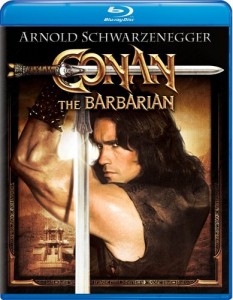
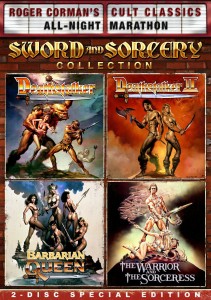
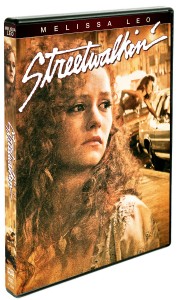
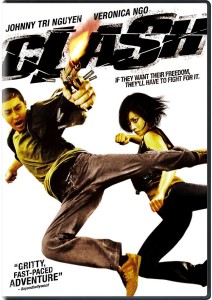
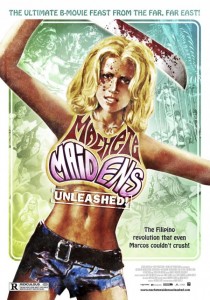






Be the 1st to Comment